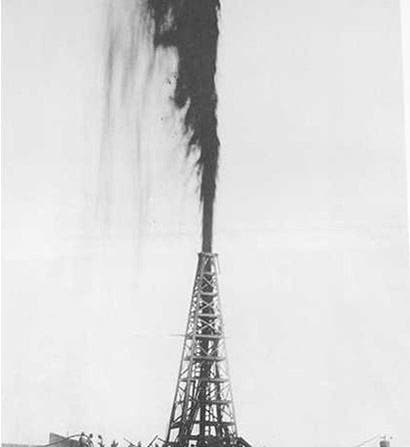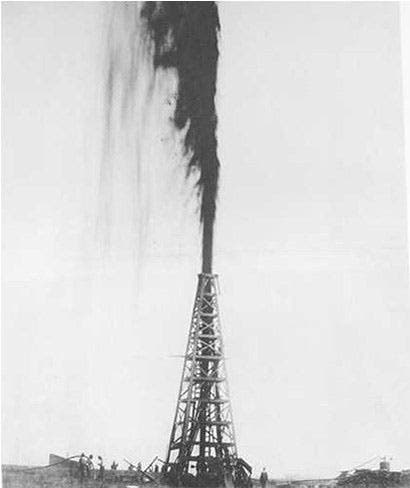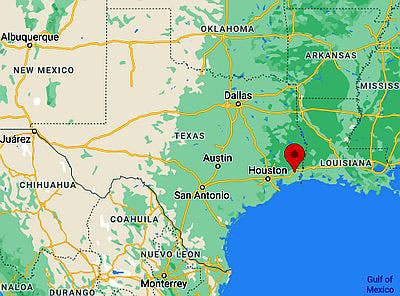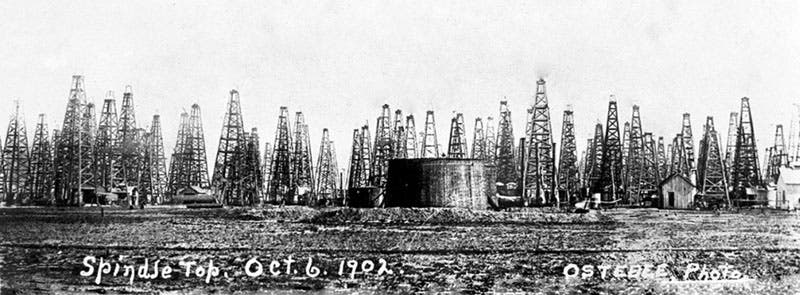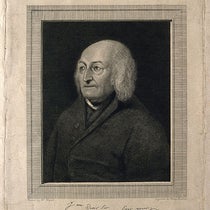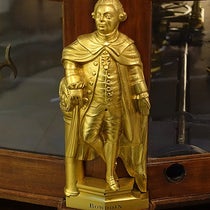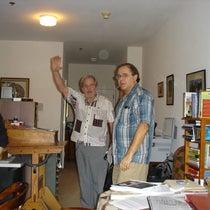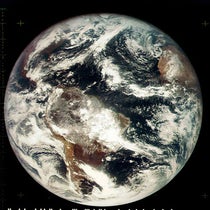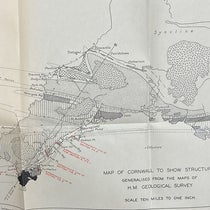Scientist of the Day - Pattillo Higgins and Anthony Lucas
Spindletop’s first oil well came gushing in at 10:30 a.m. on Jan 10. 1901, inaugurating the great Texas Oil Boom. Spindletop is a gentle salt dome just south of Beaumont, Texas, over near the Louisiana border and the Gulf of Mexico (see map, second image). By gentle, we mean it towers some 15 feet over the surrounding plain. Pattillo Higgins, a Beaumont businessman and self-taught geologist, had been trying since 1892 to convince investors that there was oil at Spindletop, and he got financing to drill three wells several hundred feet down, with no success. In 1900, he convinced a Washington D.C. oil prospector, Anthony Francis Lucas, to come in with him, and they drilled one more dry well, and went broke.
Lucas, however, managed to get further financial backing from Pittsburgh and the Mellon family, and he also secured a competent crew with a new rotary drilling rig, and they started their fifth well there on Spindletop hill, late in October, 1900. They had drilled down a little over 1100 feet when, on this January day of 1901, suddenly the drill and about 300 feet of 4-inch pipe shot into the air, followed shortly by an oil geyser that roared to at least 100 feet over the top of the derrick. This is the first real gusher that anyone can remember – certainly the first in Texas – and by gusher we mean 100,000 barrels of oil a day spouting into the air, an almost unfathomable amount (by comparison, a few years earlier, the total annual production of all of Texas was just over 50 barrels). It came to be called the Lucas gusher, and it took nine days to cap the well, which means that the oil derrick was sitting in a sea of crude by the time things were under control.
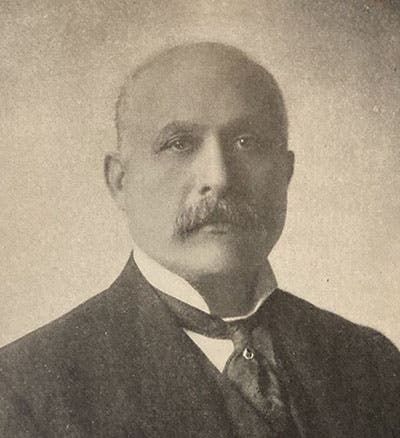
Portrait of Anthony F. Lucas, undated photograph, from Spindletop, by James A. Clark and Michel T. Halbouty, plate foll. p. 52, 1952 (author’s copy)
Naturally, there was an immediate land boom at Spindletop, and derricks shot up like bullrushes, until soon the area looked like the photograph below (fifth image). When we say the Texas Oil Boom began here, we mean that companies like Gulf Oil, Texas Oil (Texaco), and Humble Oil (later Exxon) had their beginnings at Spindletop, and other already existing firms, such as Sun Oil, which had previously been a natural gas company, quickly converted to oil production after Spindletop.
Before Spindletop, oil was used primarily for lighting, and for lubrication. There was not enough of it in the United States to use as fuel, so engines ran on wood or coal. After Spindletop, oil was cheap and abundant, and there ensued a revolution in transportation and industry in this country that was impossible to envision in 1900. Without Spindletop (or an equivalent discovery), there would have been no Ford Model T in 1908.
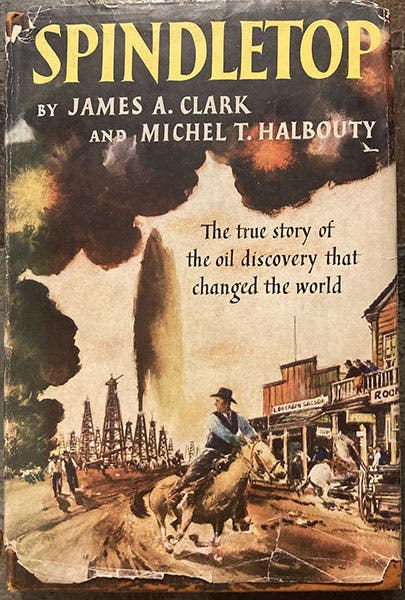
Dust jacket, Spindletop, by James A. Clark and Michel T. Halbouty, Random House, 1952 (author’s copy)
I suppose I am fond of the story of Spindletop because one of the first books I can remember my father reading was one by James Clark and Michel Halbouty called Spindletop (1952), and while Dad sat in his chair reading the inside of the book, I was fascinated by the dust jacket, with its border of smoke and a towering fountain of oil spraying over everything (sixth image). We were living in Texas at the time, in a city (Houston) that was still riding the oil boom, so one can understand why a book on Spindletop would have been of interest to Texans. My Dad’s copy disappeared long ago, but I found a copy for myself on the used book market, and the dust jacket still floods me with memories – just about the only memories I have of a boyhood in Houston.
There has long been a Spindletop Museum in Beaumont, and it has now been taken over by Lamar University, moved to their campus in Beaumont, and renamed the Spindletop Boomtown Museum. I suspect it is worth a visit. Their homepage has a link to a video made during the centennial celebration of the Lucas gusher in 2001. The man who introduced President Bush was one of the authors of Spindletop, Michel Halbouty, still going strong, fifty years after his book was published.
William B. Ashworth, Jr., Consultant for the History of Science, Linda Hall Library and Associate Professor emeritus, Department of History, University of Missouri-Kansas City. Comments or corrections are welcome; please direct to ashworthw@umkc.edu.

